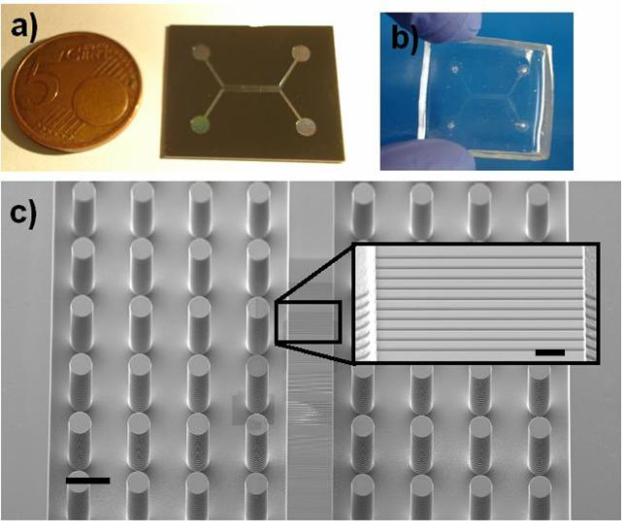The rapid
development of nanofabrication techniques is dramatically increasing
the ability of manipulating fluids and molecules at the nanoscale, an
issue very promising for biological, chemical and medical applications.
Fabrication of regular controlled nanostructures
(nanochannels or nanoslits), offers new tools for investigating on phenomena
that only take place at this scale, and which could be exploited to
solve challenging technological problems such as single
molecule manipulation.
NanoMolecular Sieve (NMS) Project focuses on the development of miniaturized
nanofluidic devices for the separation of biomolecules.
Nanofabrication approaches based on low-cost materials and high-throughput
techniques have been privileged, as one of the main goals of NanoMed
Labs is the transfer of scientific results to industrial products having
high innovative and technological value.
In the framework of NMS project, sieves for the separation of long DNA
molecules have been fabricated and characterized. They take advantage
of the entropic recoil separation mechanism (Fig. 1), that was proposed
for the first time by Cabodi et al. in Anal. Chem. 2002.
They consists in nanostructures, fabricated using a Focused Ion Beam
(FIB) on a silicon master Fig. 1 a, which are then replicated using
elastomeric materials, such as poly(dimethylsiloxane) (PDMS), and soft-lithography
techniques Fig. 1 b. These nanostructures, part of lab-on-chip devices,
are then used to study the behaviour of DNA molecules in nanoconfinement
conditions Fig. 5.
Figure
1. Picture of a silicon micromachined device (a) and of its polymeric
replica (b). SEM image of the region between microchannels where arrays
of nanochannels (shown in the inset, scale bar 15 m) are patterned using
a Focused Ion Beam, (scale bar, 50 m).
Implementation of a nanofluidic lab-on-chip for biomedical applications requires a multidisciplinary approach which results in a complex process that involves several phases: i) design of the micro/nanofluidic device layout Fig. 2 a, ii) Finite Elements Method (FEM) based simulations of fluidic and mechanical behaviour of designed micro/nanostructures, Fig. 2 b iii) design and implementation of proper nanofabrication processes Fig. 3, iv) characterization of the fabricated prototypes Fig. 4, v) processing of biological samples using nanofluidic devices and analysis of biomolecules behaviour in nanoconfined spaces.
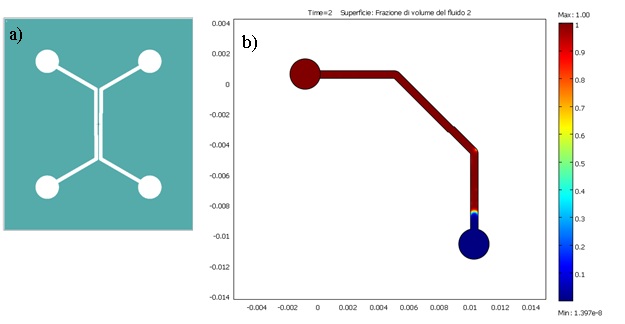
Figure 2. a) Example of nanofluidic device layout. b) After the fabrication, polymeric devices are filled with aqueous solutions where DNA molecules are dispersed. Simulations using FEM based simulations have been performed to study the filling process of the device due to capillary forces.
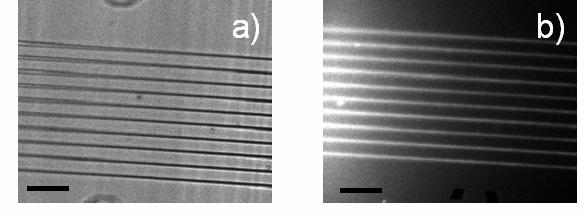
Figure
3.a)
Bright field optical image of an array of sealed nanochannels (scale
bar, 9 m). b) Epi-fluorescence image of nanochannels filled with a fluorescent
solution (scale bar, 9 m).
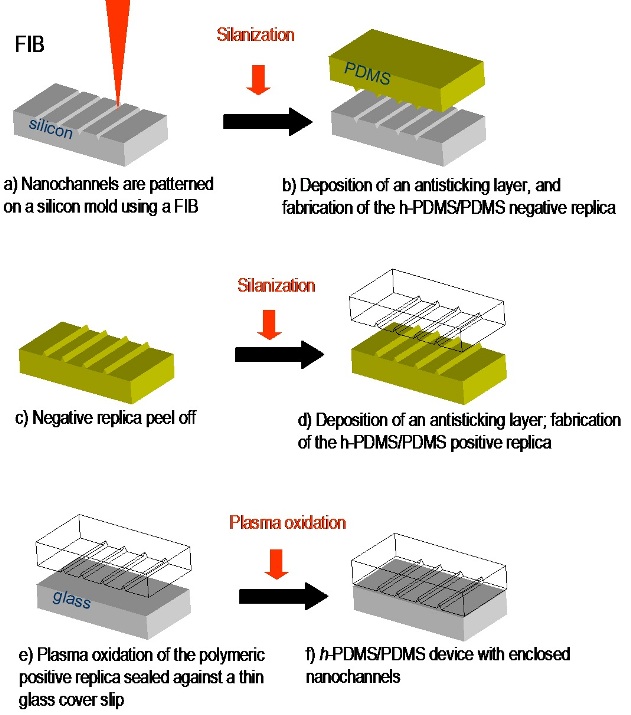
Figure
4.
Nanofluidic device fabrication process. Polymeric materials are used
in a double replica molding procedure which is followed by a plasma
oxygen activated bonding.
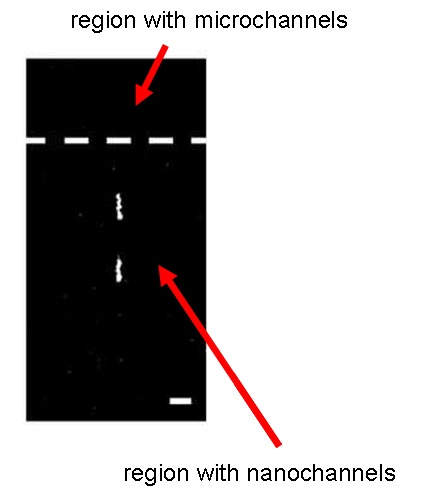
Figure 5. Stained -DNA molecules inserted in nanochannels. The dashed lines represent the edge of the nanostructures which are in the lower part of the picture, (scale bar, 2.5 m).
NMS project preliminary results confirmed that the fabricated nanochannels can be used to induce conformational changes on DNA chains, in fact elongated DNA molecules passing through them were observed Fig. 5.
Contact
person: elena.angeli@unige.it,
chiara.manneschi@libero.it
How to reach us
Last update
6/23/10

